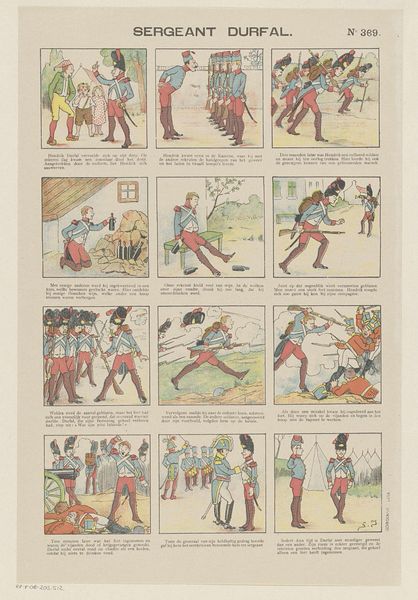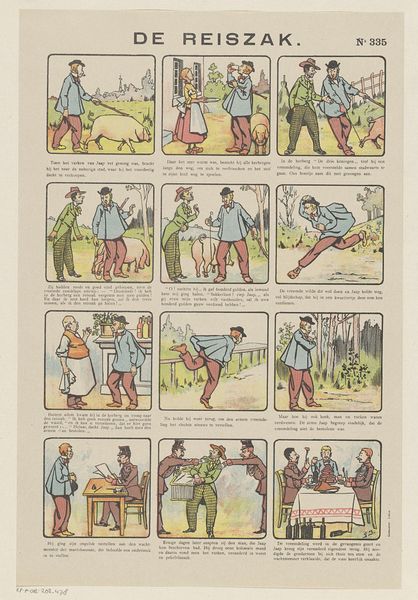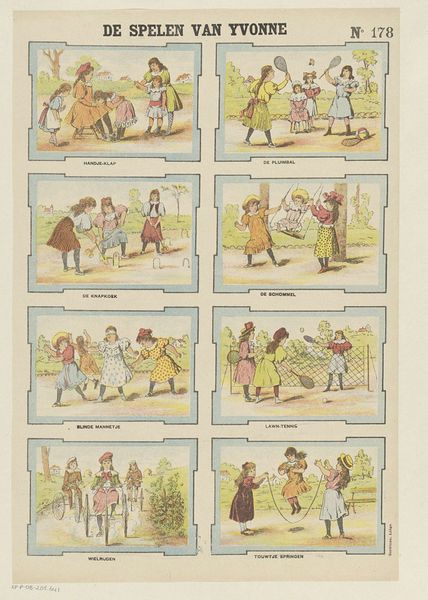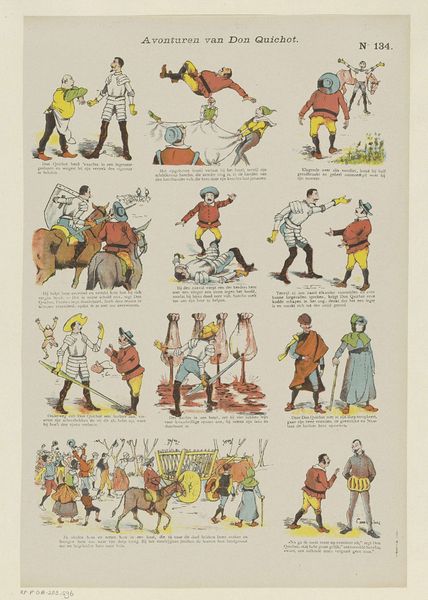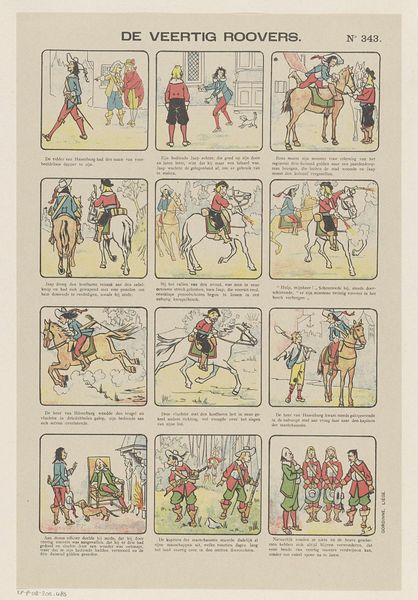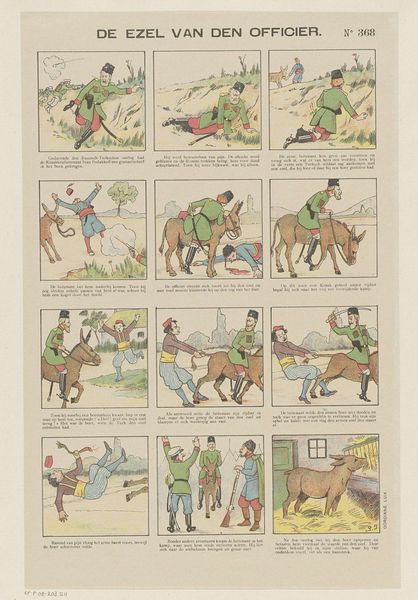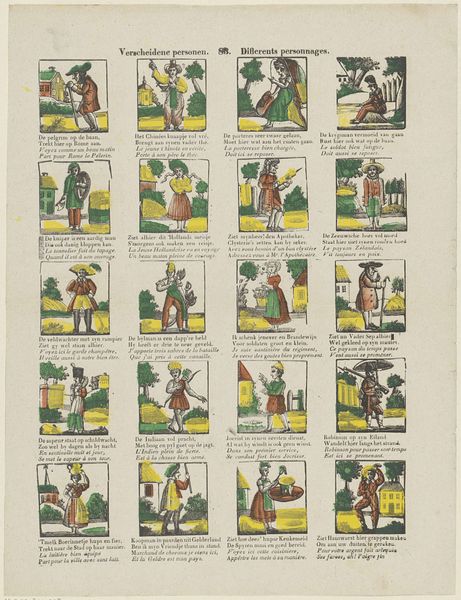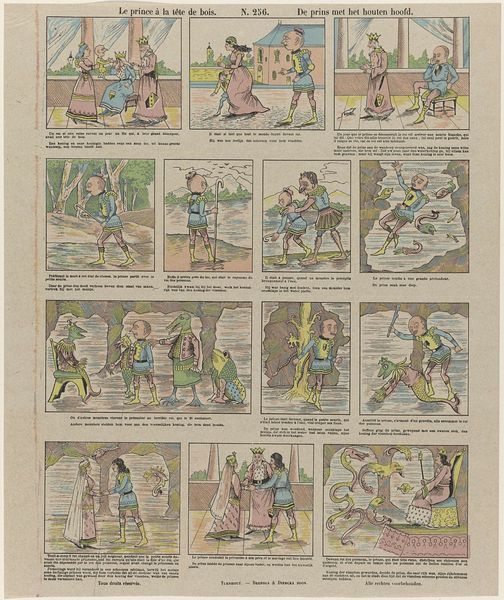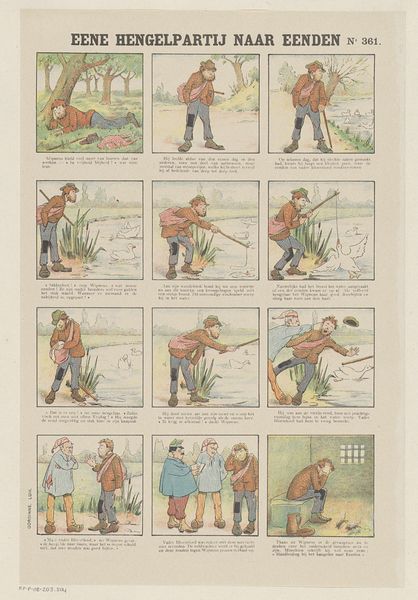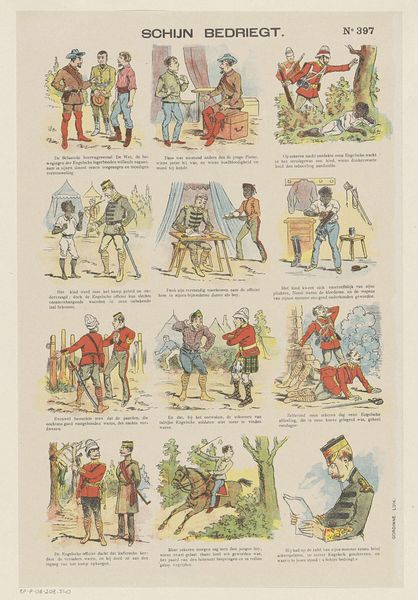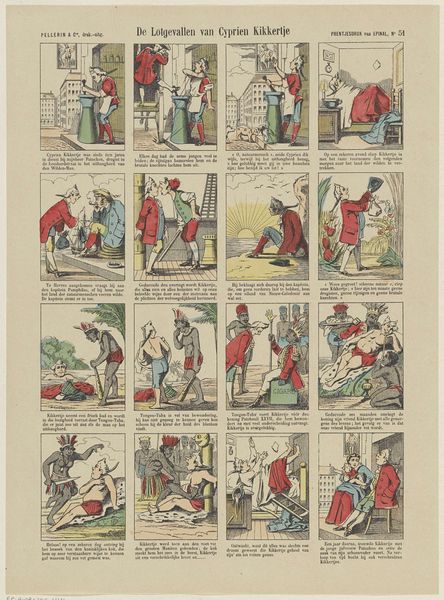
#
comic strip sketch
#
narrative-art
#
comic strip
# print
#
comic
#
orientalism
#
genre-painting
Dimensions: height 400 mm, width 268 mm
Copyright: Rijks Museum: Open Domain
Editor: So, this is *Korporaal Schroefkop*, which translates to Corporal Screwtop. It's a print, made sometime between 1894 and 1959 by someone identified only as Monogrammist G.J. The panels seem to tell a sequential story. I’m struck by its sort of old-fashioned comic strip style and its potential for dark humor. What can you tell us about the broader context of something like this? Curator: Well, considering the time frame, and the "Corporal" title, it’s important to recognize this work within the context of colonialism, specifically the Dutch colonial history and their presence in places like Indonesia. What looks like "dark humor" to us, likely carries a narrative that perpetuated harmful stereotypes and power imbalances present during that era. Editor: Colonialism... I hadn’t thought of that at first glance, seeing just a comic. So, these depictions of violence would've played into certain narratives? Curator: Precisely. Visual culture played a crucial role in shaping public perception and legitimizing colonial actions. Think about who the audience was likely to be, what narratives about non-European people were already circulating, and how an image like this might reinforce or challenge those narratives – probably reinforce. What do you notice about the portrayal of non-Europeans in these panels? Editor: They definitely appear simplified and often in subservient or victimized positions... It's really unsettling seeing this under a colonial lens. It goes from something seemingly lighthearted to something with loaded meaning. Curator: Exactly. This highlights the critical role that cultural and institutional contexts play in understanding art. It challenges us to consider the ethical implications of image-making and its role in historical power structures. So how would you re-evaluate it, knowing what you know now? Editor: I think it is an important visual for confronting uncomfortable historical realities. This has made me see how comics like this should also serve as important reminders to resist simplifying people to stereotypes. Curator: It's a good observation that understanding its original intent and impact helps us avoid repeating harmful historical patterns.
Comments
No comments
Be the first to comment and join the conversation on the ultimate creative platform.
